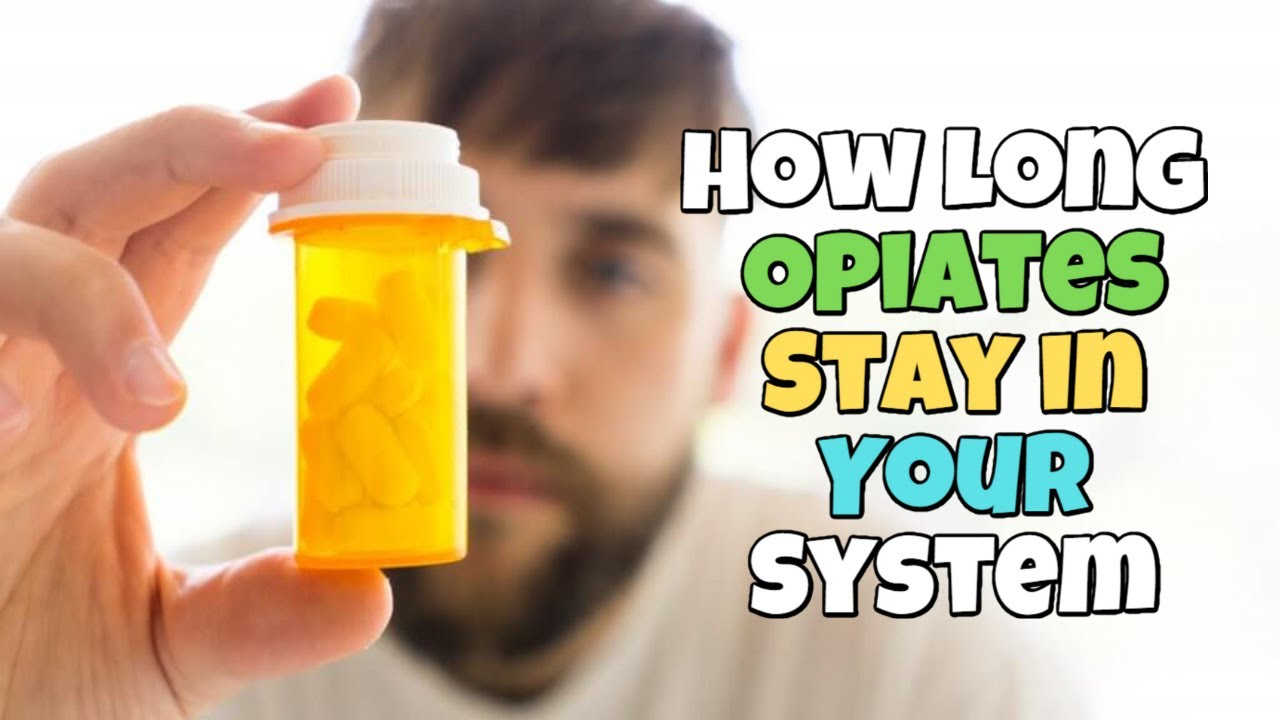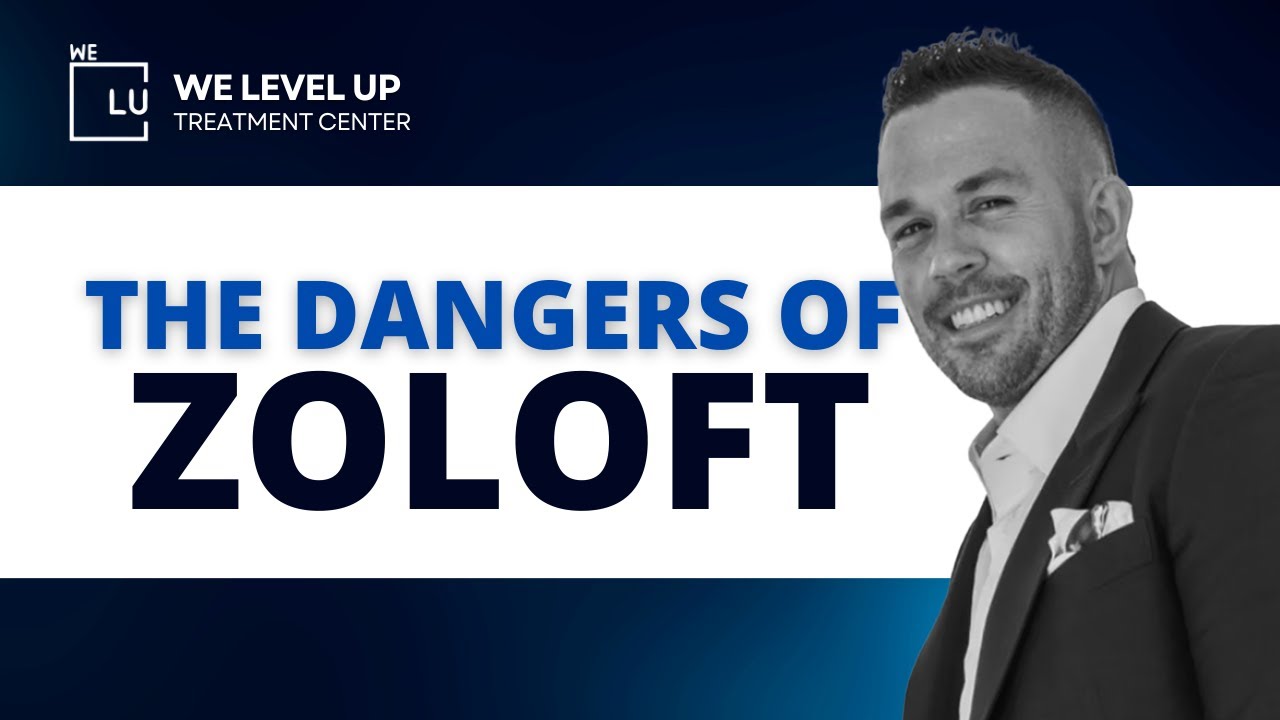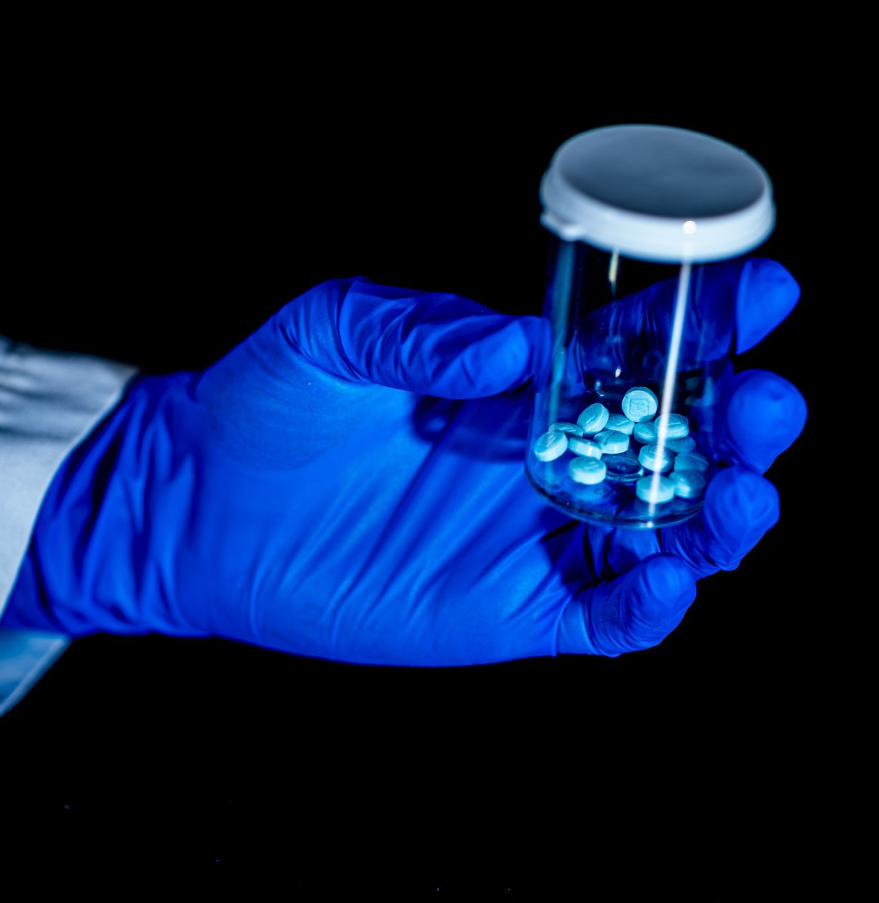How Long Does Oxycodone Stay in Your System?
The amount of time oxycodone stays in your system varies depending on the form of the drug you take. Periodic drug tests may be required in cases where oxycodone is used. These tests may be requested by employers, physicians, or legal institutions to determine the drug levels in your body. Standard drug tests, such as urine, blood, saliva, and hair tests, can detect oxycodone. The duration for which oxycodone can be detected in these tests is determined by the type of test used and whether the medication is taken in short-acting or extended-release form.
If you or someone you know is suffering from Oxycodone substance abuse or withdrawals, the We Level Up Treatment Centers can help. Speak with our hotline specialists and discover the support and professional-accredited addiction treatment programs we offer.
What is Oxycodone?
Oxycodone, a potent pain relief medication, is prescribed for moderate to severe pain management. It belongs to the class of prescription opioids, known for their efficacy in treating intense pain when other medications fail. Operating by binding to brain opioid receptors, oxycodone interrupts pain signals transmitted from the body. Dampening nerve communication throughout the body to the brain acts as a central nervous system depressant. This characteristic diminishes pain signals and slows respiratory functions, heart rate, and blood pressure.
Oxycodone’s Uses
Oxycodone tackles moderate to severe pain by altering how the body processes pain signals. It aids in managing these symptoms:
- Anxiety.
- Fatigue.
- Sleep difficulties related to chronic pain.
Immediate-release and extended-release are the primary forms of Oxycodone, often employed when other pain medications are ineffective or not tolerated well enough. It is typically administered post-surgery, injury, or for specific medical conditions demanding opioid treatment.
Oxycodone’s Side Effects
Common side effects of Oxycodone include:
- Nausea.
- Vomiting.
- Constipation.
- Drowsiness.
- Dry mouth.
Serious effects, such as respiratory depression, low blood pressure, breathing slowdowns, and addiction, can also manifest.
How Long Does Oxycodone Stay in Your System?
Oxycodone, a potent pain relief medication, lingers in the system for varying durations, influenced by factors such as dosage and duration of use. Detection times for oxycodone vary across testing methods, with hair tests demonstrating prolonged detection compared to urine, saliva, and blood tests.
How Long Does Oxycodone Stay in Urine?
Oxycodone can be detected in urine for a period ranging between one to three days post the last intake. Its metabolite, noroxycodone, also remains detectable within the same timeframe. Tests may screen for oxycodone, noroxycodone, or both, depending on the specific test conducted.
How Long Does Oxycodone Stay in Saliva?
Oxycodone in saliva lasts relatively short, typically within 24 to 36 hours. As a result, saliva tests for oxycodone are less commonly administered due to the limited detection window.
How Long Does Oxycodone Stay in Blood?
Both oxycodone and its breakdown product, noroxycodone, maintain visibility in the blood for a mere three to six hours following the last dose. Consequently, blood tests targeting oxycodone are infrequently administered due to this brief detection window.
How Long Does Oxycodone Stay in Your Hair?
Hair tests exhibit an extended detection window for oxycodone compared to other methods. A 1.5-inch hair segment can reveal oxycodone use over the past 90 days, making hair tests one of the most comprehensive approaches to identifying oxycodone consumption.
ow Long Does It Take To Feel the Effects of Oxycodone?
The duration for Oxycodone to manifest its effects varies depending on its formulation, influencing its onset and duration of action:
- Short-Acting Oxycodone: Typically initiates its effects within 10 to 15 minutes, reaching peak effectiveness within an hour and lasting 3 to 6 hours.
- Long-Acting Oxycodone: Begins taking effect approximately an hour after ingestion, with its peak effect occurring within this timeframe.
However, individual responses to the drug are subject to variability based on several factors, such as dosage, tolerance levels, and the method of ingestion.
What Is the Half-Life of Oxycodone?
The term “half-life” denotes the time required for half of a single dose of a drug to be metabolized and eliminated from the bloodstream. Complete clearance of a drug from the system typically necessitates approximately five half-lives. The half-life of Oxycodone is contingent upon its specific dosage forms:
- Short-Acting Oxycodone Dosage Forms: Exhibits a half-life range of 3 to 5 hours.
- Extended-Release Oxycodone Hydrochloride Tablets (OxyContin): Possesses a half-life of about 4.5 hours.
- Extended-Release Oxycodone Myristate Capsules (Xtampza ER): Shows a half-life of approximately 5.6 hours.
Various factors can affect Oxycodone’s half-life duration. Advanced age and impaired kidney function, for instance, may extend the drug’s half-life, prolonging its presence within the body.

Skip To:
Learn More:
- Is Oxycodone Addictive
- What Is Oxycodone?
- Oxycodone Side Effects
- Opiate Withdrawal
- Opioid Withdrawal Timeline
- Opioid Withdrawal Symptoms
- Tramadol vs Oxycodone: Which is Better? Side Effect Comparison
- Oxycodone Dosage Guide, Precautions, and Max Dose
- Oxycodone Vs Oxycontin. Differences & Similarities, Abuse & Treatment Options
Get Help. Get Better. Get Your Life Back.
Searching for Accredited Drug and Alcohol Rehab Centers Near You? We Level Up Texas Is Opening Soon!
Even if you have failed previously and relapsed, or are in the middle of a difficult crisis, we stand ready to support you. Our trusted behavioral health specialists will not give up on you. When you feel ready or just want someone to speak to about therapy alternatives to change your life call us. Even if we cannot assist you, we will lead you to wherever you can get support. There is no obligation. Call our network hotline today.
FREE Addiction Hotline – Call 24/7
How Are Oxycodone Drug Tests Done?
Testing for the presence of oxycodone can be initiated by medical professionals, employers, or legal entities to determine various aspects of your substance intake. These tests serve to determine the following:
- Whether you are compliant with prescribed medication usage.
- If you are using unauthorized substances outside of prescribed medication.
- Potential relapses into substance use post-rehabilitation.
The prevalent oxycodone tests include urine, saliva, blood, and hair tests. Blood tests are less common as they primarily indicate recent oxycodone use within a few hours. Conversely, urine tests are more frequent due to their non-invasive nature and cost-effectiveness.
What Factors Affect How Long Oxycodone Stays in Your System?
Numerous factors can influence the duration oxycodone remains detectable in a drug test:
- Oxycodone formulation: Extended-release forms might exhibit a more extended detection period than short-acting ones.
- Dosage: Higher doses increase the likelihood of detection compared to lower doses.
- Frequency of oxycodone intake: Regular consumption is more likely to register in a test compared to occasional use.
- Administration method: Injecting or snorting oxycodone may hasten its elimination from the system compared to oral ingestion.
- Age: Oxycodone might persist longer in the system of older individuals than younger ones.
- Body composition and gender: Body fat percentage and gender can influence oxycodone detection duration.
- Health conditions: Underlying medical issues such as kidney impairment may prolong oxycodone presence.
- Other medications: Interactions with other drugs can extend oxycodone detection.
- Hydration and nutrition: Fluid intake and nutritional status affect oxycodone detection; for instance, diluted urine may hinder the detection of low oxycodone doses.
- Test type: Detection periods vary among tests; blood and saliva tests reveal oxycodone use for a few hours, urine tests for days, and hair tests for several months.
For specific inquiries about oxycodone detection on a drug test, consulting a doctor is advisable. Additionally, individuals prescribed oxycodone should inform their healthcare provider about any mandated drug tests, allowing the doctor to validate the legitimate medical need for the medication.
Get Help. Get Better. Get Your Life Back.
Searching for Accredited Drug and Alcohol Rehab Centers Near You? We Level Up Texas Is Opening Soon!
Even if you have failed previously and relapsed, or are in the middle of a difficult crisis, we stand ready to support you. Our trusted behavioral health specialists will not give up on you. When you feel ready or just want someone to speak to about therapy alternatives to change your life call us. Even if we cannot assist you, we will lead you to wherever you can get support. There is no obligation. Call our network hotline today.
FREE Addiction Hotline – Call 24/7Long-term Effects of Oxycodone Use
- Development of a severe tolerance.
- Emergence of withdrawal symptoms (indicative of physical dependence).
- Potential development of an opiate use disorder.
- Occasional cases of liver and kidney failure after extended use.
- Brain changes lead to issues with attention, memory, and problem-solving.
When used as prescribed and monitored by a physician, the risk of detrimental long-term effects related to medicinal use is significantly minimized. Prolonged misuse raises the likelihood of these adverse long-term effects, as well as the risk of overdose due to binge usage or mixing drugs, such as alcohol, which can potentially be fatal.

Start a New Life
Begin with a free call to an addiction & behavioral health treatment advisor. Learn more about our dual-diagnosis programs. The We Level Up treatment center network delivers recovery programs that vary by each treatment facility. Call to learn more.
- Personalized Care
- Caring Accountable Staff
- World-class Amenities
- Licensed & Accredited
- Renowned w/ 100s 5-Star Reviews
We’ll Call You
Oxycodone Misuse Side-Effects
Oxycodone is classified under the Controlled Substance Act (CSA) as a Schedule II controlled substance due to its heightened potential for abuse. This designation signifies the substance’s capability to induce severe physical or psychological dependency. Despite being available for prescription use by healthcare providers, the heightened risk of addiction, dependence, adverse interactions, and potential overdosing necessitates strict adherence to prescribed medical guidelines when consuming this medication.
The euphoric and calming sensations produced by oxycodone make individuals susceptible to developing an addiction, even when following professional medical recommendations. Additionally, the body often builds a tolerance to the pain-relieving effects of the medication, prompting the individual to escalate their dosage, subsequently elevating the likelihood of dependency and addiction.
Oxycodone addiction can lead to several detrimental side effects, including:
- Chronic sinus infections.
- Intense headaches.
- Sleep apnea.
- Withdrawal symptoms in case of irregular dosing, such as muscle cramps, restlessness, perspiration, vomiting, heightened heart rate, and insomnia.
- Respiratory issues.
- Swallowing difficulties.
- Hepatic complications.
- Diminished kidney function.
Potential Warnings on Oxycodone Overdose
Oxycodone carries a potential risk of abuse and addiction, increasing the possibility of overdose and fatal outcomes. It might also result in severe, potentially life-threatening breathing difficulties. To minimize these risks, your healthcare provider should prescribe the lowest effective dose of oxycodone for the shortest duration possible.
Breathing problems may be more pronounced when beginning this medication, after dosage adjustments, or when an incorrect dose/strength is taken. Combining this medication with alcohol or other substances that induce drowsiness or respiratory issues can lead to severe side effects, including death.
Additionally, other drugs may impact the elimination of oxycodone from your system, affecting its efficacy. Familiarize yourself with oxycodone’s administration guidelines and medications that should be avoided. Review the Drug Interactions section for more information. Seek immediate medical attention if severe side effects like slowed or shallow breathing, unusual dizziness, extreme drowsiness, or difficulty awakening occur.
Safeguard this medication to prevent theft, misuse, or abuse. If someone unintentionally ingests this drug, seek immediate medical assistance.
For women of childbearing age, discussing the risks and benefits with their doctor(s) before using this medication is crucial. Notify your doctor if you are pregnant or planning a pregnancy. During pregnancy, use this medication only when necessary, as it may slightly heighten the risk of birth defects within the first two months of pregnancy. Prolonged or high-dose usage close to the expected delivery date might negatively impact the unborn baby.
To mitigate these risks, use the lowest effective dose for the shortest duration. Newborns born to mothers who used this medication extensively may exhibit severe (possibly fatal) withdrawal symptoms. Notify the doctor promptly if you observe persistent crying, slowed breathing, irritability, tremors, vomiting, diarrhea, feeding difficulties, or inadequate weight gain in your newborn.
Precautions on Oxycodone Doses and Medical History
Inform your healthcare provider or pharmacist about any allergic reactions to oxycodone, other opioid pain relievers, or any other allergies you may have. The inactive ingredients present in this product could trigger allergic reactions or other complications. Consult your pharmacist for more information.
Before commencing this medication, disclose your medical history to your healthcare provider or pharmacist. This includes any brain disorders, breathing problems like asthma or sleep apnea, kidney or liver disease, mental or mood disorders, history of substance use disorder, gastrointestinal issues, urinary difficulties, gallbladder or pancreatic disease.
Cautionary Advice
Liquid forms of this medication may contain sugar, aspartame, and alcohol. If you have conditions like diabetes, alcohol dependence, liver disease, phenylketonuria (PKU), or any other dietary restrictions, consult your doctor or pharmacist for safe usage.
Special Considerations for Certain Groups
Elderly individuals might be more susceptible to side effects such as confusion, dizziness, drowsiness, and respiratory depression.
During pregnancy, use this medication only if necessary, as it may pose risks to an unborn baby. Discuss the potential risks and benefits with your doctor.
For breastfeeding individuals, this drug can pass into breast milk and have adverse effects on the nursing infant. Report any unusual symptoms in your baby, such as excessive sleepiness, feeding difficulties, or breathing issues, to your doctor promptly. Seek medical advice before breastfeeding while using this medication.
Interactions with Medications and Conditions
An interaction occurs when a substance alters how a drug functions, potentially causing harm or hindering its effectiveness. It’s crucial to avoid alcohol consumption while using immediate-release oxycodone or OxyContin, as this combination can be fatal.
Various drugs and medical conditions may interact with both immediate-release oxycodone and OxyContin:
- Other pain medications, certain drugs for mental health conditions, tranquilizers, sleeping aids, and alcohol may lead to breathing issues, low blood pressure, extreme fatigue, or coma.
- Skeletal muscle relaxers could result in breathing complications.
- Pain drugs operating similarly to immediate-release oxycodone or OxyContin might heighten the risk of side effects.
- Certain antibiotics, antifungal medications, heart medications, seizure drugs, and HIV drugs might alter the effectiveness of immediate-release oxycodone or OxyContin or increase the likelihood of side effects.
Opening Soon! First-Class Facilities & Amenities
World-Class High-Quality Addiction & Mental Health Rehabilitation Treatment
Coming Soon! Rehab Centers TourRenowned Addiction Centers. Serene Private Facilities. Inpatient Rehab Programs Vary.
FREE Addiction Hotline – Call 24/7Proven recovery success experience, backed by a Team with History of:
15+
Years of Unified Experience
100s
5-Star Reviews Across Our Centers
10K
Recovery Success Stories Across Our Network
- Low Patient to Therapist Ratio
- Onsite Medical Detox Center
- Comprehensive Dual-Diagnosis Treatment
- Complimentary Family & Alumni Programs
- Coaching, Recovery & Personal Development Events
We Level Up Dual Diagnosis Treatment
The definition of dual diagnosis, also known as co-occurring disorders, can vary among institutions. Generally, it refers to simultaneously treating a substance use disorder and a mental health disorder. Treating individuals with co-occurring disorders is a crucial aspect of our inpatient treatment. Co-occurring disorders are strongly linked to substance abuse.
We create treatment plans that address withdrawal symptoms, the psychological aspects of drug use, and managing underlying mental health disorders to set clients up for success. A comprehensive mental health assessment identifies treatment possibilities. Our dual diagnosis treatment center provides access to mental health counselors, medical professionals, behavioral therapy, and medication treatment, ensuring the highest quality of care.
We understand the intricate relationship between mental and substance abuse disorders, which can result in a destructive cycle of addiction. We specialize in dual-diagnosis cases, offering the best chance for healing and long-lasting recovery.
Recognizing that you may have a mental illness can be challenging. However, treating substance abuse becomes much easier once you receive a proper diagnosis and treatment. Only qualified medical professionals can diagnose these underlying conditions. If you suspect you have a co-occurring disorder, we encourage you to seek a reputable treatment center to begin your journey to recovery. Contact We Level Up today.
Start a New Life
Begin with a free call to an addiction & behavioral health treatment advisor. Learn more about our dual-diagnosis programs. The We Level Up treatment center network delivers recovery programs that vary by each treatment facility. Call to learn more.
- Personalized Care
- Caring Accountable Staff
- World-class Amenities
- Licensed & Accredited
- Renowned w/ 100s 5-Star Reviews
We’ll Call You
How Long Do Opiates Stay in Your System?
Search We Level Up TX How Long Does Oxycodone Stay in Your System? Topics & Resources
Sources
- Drug Enforcement Administration. “Oxycodone.” April 2020. How long does oxycodone stay in your urine – Related Articles
- Canadian Agency for Drugs and Technologies in Health. “Opioid Formulations With Tamper-Resistan[…]roducts and Policies.” March 2017. How long does oxycodone stays in your system – Related Articles
- American Society of Addiction Medicine. “National Practice Guideline for the Treatment of Opioid Use Disorder“>National[…] Use Disorder.” December 18, 2019. how long does oxycodone stay in system – Related Articles
- Hallare, Jericho & Gerriets, Valerie. “Half Life“>Half Life.” StatPearls, June 23, 2022. How long does oxycodone stay in your system, How long does oxycodone stay in urine, How long does oxycodone stays in your system, how long does oxycodone stay in system – Related Articles
- Gryczynski, Jan, et al. “Hair Drug Testing Results and Self-reported Drug Use among Primary Care Patients with Moderate-risk Illicit Drug Use“>Hair Dru[…]icit Drug Use.” Drug and Alcohol Dependence, May 17, 2014. how long does oxycodone stay in your system, How long does oxycodone stay in urine, How long does oxycodone stays in your system, how long does oxycodone stay in system – Related Articles
- LabCorp. “Drug Test Summary for Urine Oral Fluid and Hair“>Drug Tes[…]luid and Hair.” how long does oxycodone stay in your system, How long does oxycodone stay in urine, How long does oxycodone stays in your system, how long does oxycodone stay in system – Related Articles
- ARUP Laboratories. “Drug Plasma Half-Life and Urine Detection Window“>Drug Pla[…]ection Window.” September 2022. how long does oxycodone stay in your system, How long does oxycodone stay in urine, How long does oxycodone stays in your system, how long does oxycodone stay in system – Related Articles
- ARUP Laboratories. “Therapeutic Drug Monitoring“>Therapeu[…]ug Monitoring.” February 2023. how long does oxycodone stay in your system, How long does oxycodone stay in urine, How long does oxycodone stays in your system, how long does oxycodone stay in system – Related Articles
- Verstraete, Alain G. & Mukhdomi, Taif. “Clinical Drug Testing “>Clinical[…]Drug Testing .” StatPearls, April 23, 2023. how long does oxycodone stay in your system, How long does oxycodone stay in urine, How long does oxycodone stays in your system, how long does oxycodone stay in system – Related Articles
- Drugs.com. “Oxycodone Monograph for Professionals“>Oxycodon[…]Professionals.” April 19, 2023. how long does oxycodone stay in your system, How long does oxycodone stay in urine, How long does oxycodone stays in your system, how long does oxycodone stay in system – Related Articles






